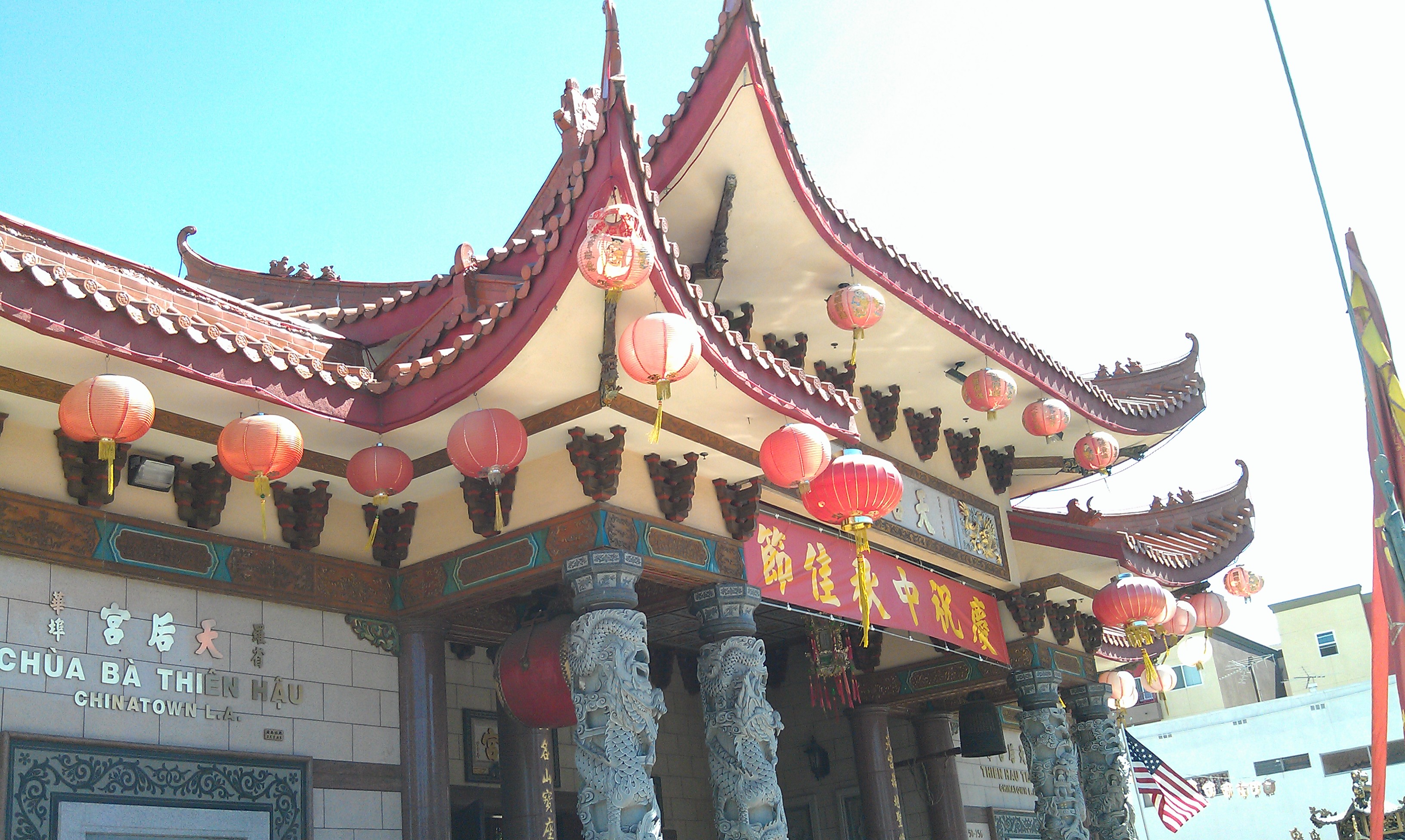Winter Featured District: CHINATOWN
By archaicpress@gmail.com / on April 12th, 2014 / in ARCHAIC PRESSSituated to the Northeast of downtown LA, the historic Chinatown District boasts vibrant colors and an exotic heritage.
Originally located near current-day Union Station in the mid-19th century, Los Angeles’ first Chinese settlement was a short alley 50-feet wide and one block long. United in small numbers, early Chinatowns were stifled by the Exclusionary Act of 1882 — a discriminatory U.S. federal law which prohibited immigration of Chinese into the country. Halting the inflow of Chinese immigrants, the Exclusion Act inhibited family formation, growth of the Chinatown community and the establishment of the first generation of Chinese Americans. But in the face of discrimination, the community held strong for decades. Construction of Union Station pushed Chinatown westward, as the community relocated and assimilated into Los Angeles’ Little Italy. But with the long-anticipated repeal of the Exclusionary Acts and the dedication of Los Angeles Chinatown’s Central Plaza in June of 1938, new life was given to the Chinatown community.
Flourishing in commerce and commonwealth, Los Angeles’ Chinatown has grown to nearly 12,000 residents, generations of Asian Americans, giving it the distinction of the third largest Chinatown district in the nation. 25 blocks, decorated in an array of mixed Chinese and American architectural styles, attract tourists from far and wide. But it’s the people and the culture that give this district its unique flair.
Beyond the koi fish and the dragons that guard the city lies a rich culture steeped in tradition. A community of mixed Asian Americans, from Singapore to Seoul, Chinatown represents the far East in an eclectic mix of races that demonstrates the American melting pot. Whether you’re first generation or fourth, tradition plays a large role in the day-to-day life of the community. Even the most modern shops lining Broadway Street have tradition in their corners — tucked away tightly, one can find altars and shrines in nearly every shop of Chinatown. Whether they’ve presented an offering for prosperity or lit a candle for a fallen family member, shop owners and community members pay homage to the ancestors who paved a way for the thriving community of today.
And perhaps the greatest aspect of Chinatown is that although it represents a place half way across the world, it isn’t completely intangible. You may not live in the community, but you can sure play the part. Being a community that survived on the hospitality of others, Chinatown is known for its open doors. Walking down the streets and alleyways, exotic and entrancing smells waft in the air. Fresh mooncakes from the bakery and the smell of tea leaves fill your nose as you’re transported to a faraway place. The temples invite you to indulge in their activities — take a bundle of incense, light them, and pay respect to their ancestors. Even the marketplaces bring strange exotic goods to your fingertips. Whether you’re looking for herbal remedies like lotus seed and shark cartilage, or scouring the streets for fine jewelry with stones in every color of the rainbow, you won’t have to look too far to find them here. Storefronts with loose gems and couture pieces give Chinatown luxe amongst tradition. And with style that is as bold as it is beautiful, there’s no surprise that we’ll be spending many of our wintery nights sipping on tea in Chinatown.
